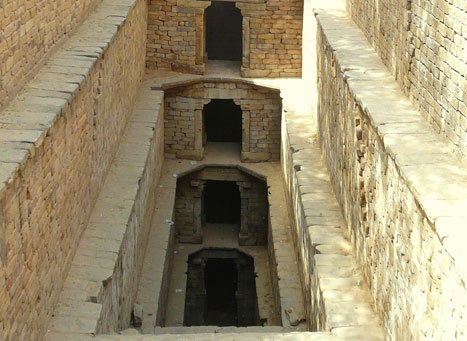
‘Gandhak’ means sulfur as the water of the well smelt like it, and ‘Baoli’ means ‘A Well with steps’ was constructed during Emperor Iltutmish, who was also the founder of the Slave dynasty. Shams-ud-din Iltutmish, aka Altamash, was the third Turkic Emperor of the Delhi Sultanate who ruled between 1211 and 1236. During his reign, Sultan Iltutmish had the ‘Hauz-i-Shamsi’, a water tank or reservoir built in 1230 AD within the Mehrauli complex beside the ‘Jahaz Mahal’ extensively used as a summer retreat by the subsequent Mughal Emperors. He also had Sultan Ghari built in 1231 AD and a Tomb for his eldest son, Prince Nasir-ud-din Mahmud, the first Islamic Tomb built in Delhi. Iltutmish had built ‘Gandhak Ki Baoli’ for Khwaja Sayed Muhammad Qutb-ud-din Bakhtiar Kaki, a well-renowned Sufi Saint during his reign greatly inspired the Sultan through his Islamic teachings. Gandhak Ki Baoli is in the shape of a huge five-tiered structure, which included a circular-shaped well on its southern side. This well was once famous amongst the local inhabitants used for diving and swimming.